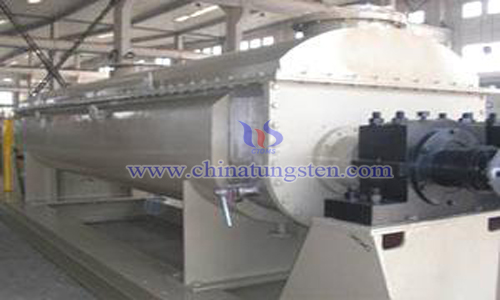Negative Thermal Expansion Material Zirconium Tungstate Research Progress
- Details
- Category: Tungsten Information
- Published on Sunday, 29 December 2019 17:21
Thermal expansion and cold shrinkage of materials is a common phenomenon in nature, but some materials are contrary to this. The coefficient of thermal expansion is negative, that is, the volume decreases with the increase of temperature, which is called negative thermal expansion material (NTE) or thermal shrinkage material. ZrW2O8 is a recently discovered material with large isotropic negative thermal expansion in a wide temperature range (0.3k to 1050k). The simple cubic ZrW2O8 was first synthesized in 1959 and found to have NTE effect. At that time, it was known that its crystal was cubic structure, but the atomic position was not determined, and its unique NTE performance did not attract attention. Until 1996, the a w sight research group of Oregon State University reported the crystal structure type of the material in science, and the research on ZrW2O8 started. It's the beginning of attention.

Tungsten zirconate, molecular weight 586.9. It is a kind of metal oxide with unusual properties. It forms metastable cubic phase through the reaction of ZrO2 and WO3 under environmental pressure. It has negative thermal expansion characteristic, that is, it contracts in a wide temperature range when heated. In contrast to most ceramics with negative CTE (coefficient of thermal expansion), the CTE of ZrW2O8 is isotropic and has a large negative value in a wide temperature range (- 273 ℃ - 777 ℃).
It is generally believed that the negative thermal expansion of ZrW2O8 can be explained by this low energy rums. Zro6 octahedron and WO4 tetrahedron are connected by the common vertex angle of oxygen atom to form a highly scalable skeleton structure. The bond force of zr-o bond and W-O bond in polyhedron is very strong, and the octahedron and tetrahedron formed by them are not easy to deform, but the bond force between zro6 octahedron and WO4 tetrahedron is small, and the coupling rotation between the two polyhedrons is easy to occur. With the increase of temperature, the transverse vibration of oxygen atom is increasing. As a result, the distance between the non bonded Zr and W decreases, and the volume shrinks continuously, resulting in the negative thermal expansion effect of "cold expansion and hot contraction".
The negative thermal expansion material ZrW2O8 is one of the most potential structural and functional materials. However, it is difficult to synthesize because of its narrow temperature range of thermodynamic stability. Although the method of low temperature synthesis can be used, the process is relatively complex, and it is quite difficult to achieve large-scale industrial production. Therefore, it is one of the future research directions to find a synthesis method with high purity and simple synthesis process. Secondly, there are still many problems in composite materials with controllable coefficient of thermal expansion. How to overcome the problem of stress concentration in the heating process caused by mismatch of coefficient of thermal expansion and obtain the composite materials with controllable coefficient of thermal expansion will be the focus of future research.
- Tungsten Oxide Manufacturer & Supplier, Chinatungsten Online: www.tungsten-oxide.com
- Tungsten News & Prices of China Tungsten Industry Association: www.ctia.com.cn
- Molybdenum News & Price: news.molybdenum.com.cn
- Tel.: 86 592 5129696; Fax: 86 592 5129797; Email: sales@chinatungsten.com



 sales@chinatungsten.com
sales@chinatungsten.com